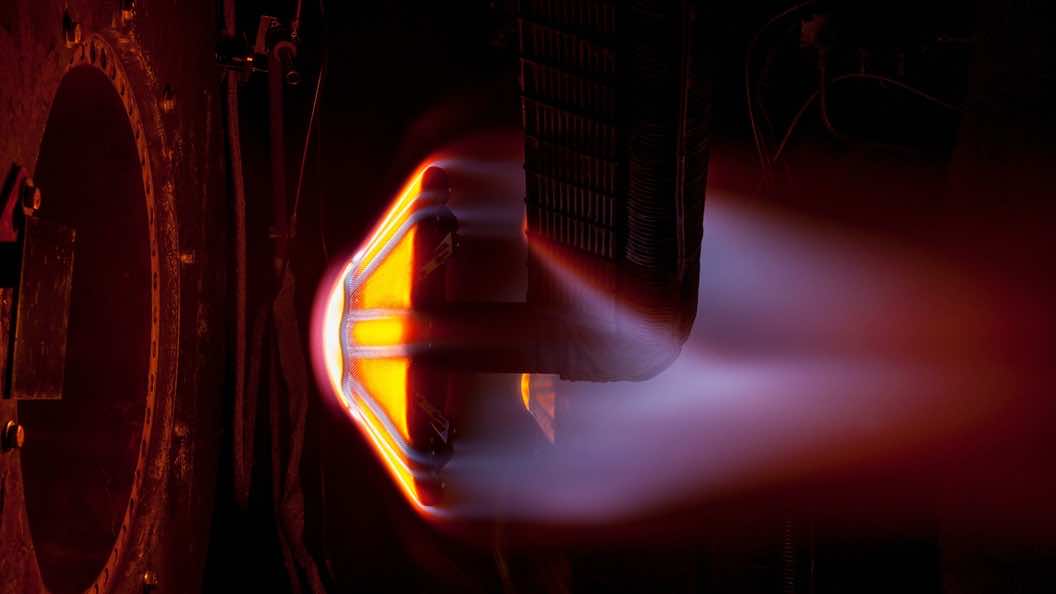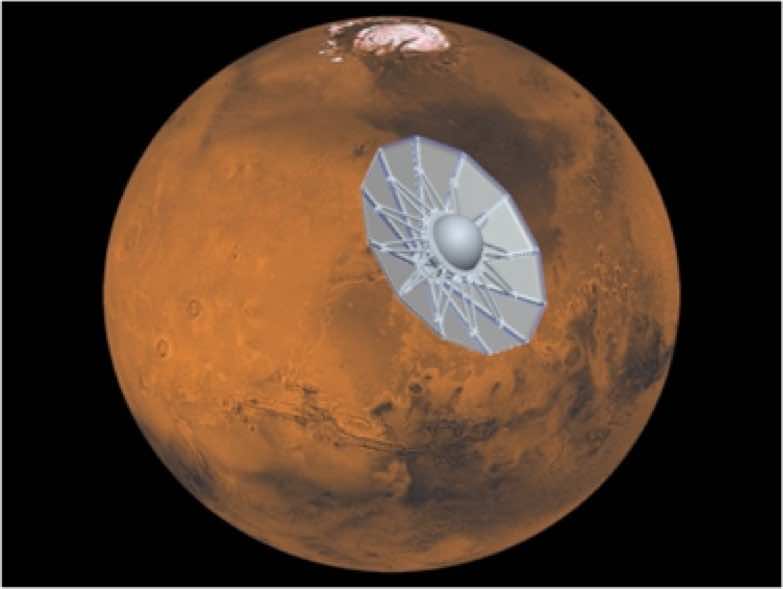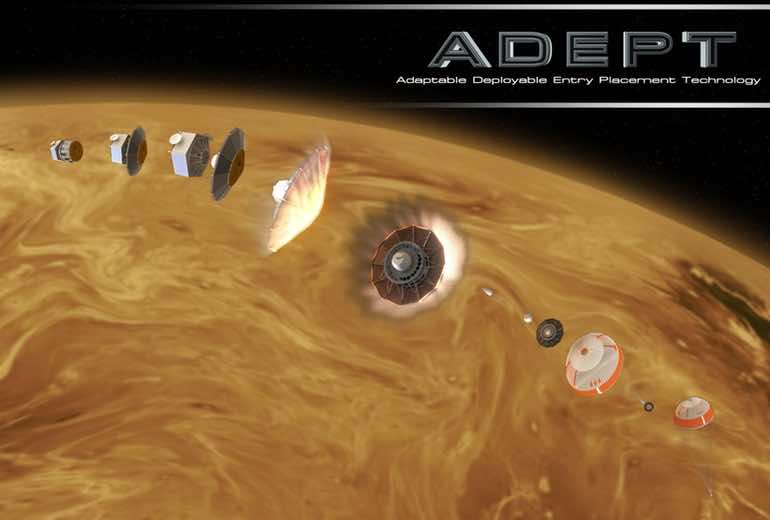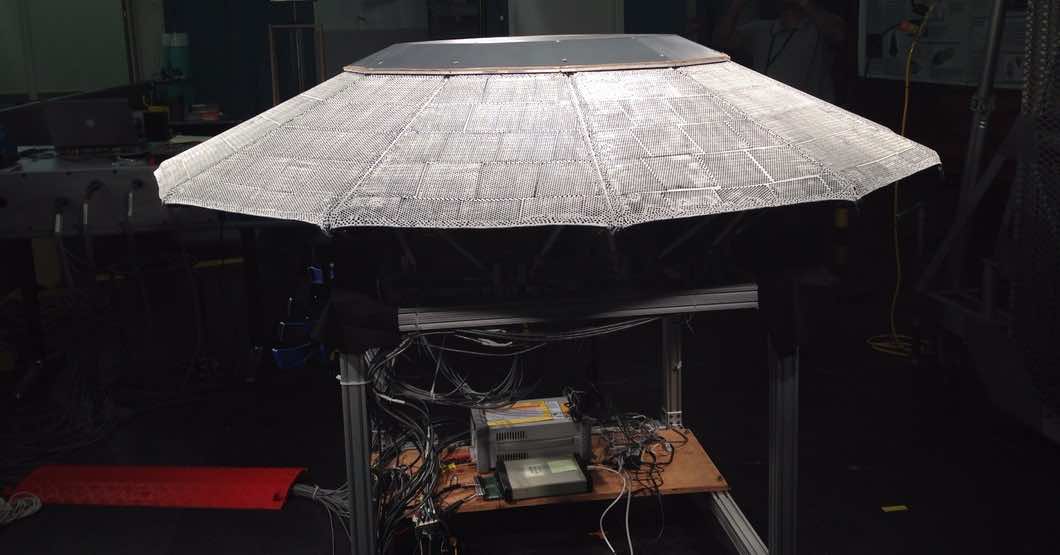Heat shields have largely been made of ceramics and plastics that are installed on the outer hull of space shuttles to avoid getting them heated up and burned after entering the atmosphere. As space missions tend to get bigger and longer, the heat shields are getting bigger too and NASA fears that by the time that properly manned flights begin for the Red Planet, the heat shields might become too small for the large designs. So, the agency needed to do something about it, so they have just completed testing of a new shield named Adaptive Deployable Entry and Placement Technology (ADEPT) using carbon fiber. It can be deployed and then folded up like an umbrella.
In a simulated atmosphere representing the Martian conditions, the NASA tested the new heat shields that are very different from conventional ones. The older set of shields included special phenolic plastics in the form of a dish-like shape that serve the dual function of slowing the aircraft down and absorbing the heat to avoid it getting in contact with the main hull of the shuttle. It can also be steered due to its good aerodynamic qualities.
It is a good system overall, giving us various options and multi-faceted functionality, but it is also a large, rigid and bulky system that only deploys when the spacecraft has entered the inner part of the atmosphere. It means that it isn’t able to stop the initial surge in acceleration and speed, only the latter stages. It is to be noted that it can only minimize acceleration till 450G whereas human body cannot survive G-force more than 11 G, so it isn’t that effective when coming down. So, these ablative shields are far from ideal and sooner or later they will have to be replaced. Martian atmosphere is different and thinner than Earth’s so what will happen if they don’t deploy their heat absorbing powers at all? Another problem previously stated is that these rigid shields need to be made in ever larger diameters to accommodate even larger spaceships, so they place heavy burdens on design engineers to handle the factors.
NASA’s engineers knew that a new heat shield would be inevitable, so they have been working on it since the 1970s. The new heat shield is woven carbon-fiber material that is held rigid by support points including ridges. The shields fold up during launch and thus the craft experiences minimal aerodynamic problems during launch. It is much thinner than the previous polymers such that it doesn’t melt away but rather re-radiates the heat away instead of conducting it to the outer body of the shuttle. It can also operate at higher altitudes where air pressure is low, and thus the spaceship can enter the atmosphere at a shallower angle and not get burned due to air friction. Due to it deploying earlier than previous ones, it can keep the shuttle at less than 30 G-force that is remarkable considering the 450 G force offered by its counterparts. So, future probes can land on any surface without getting burned up in between. It can also be converted into an insulated heat tent for future Martian dwellers!
The current test shield can hold a payload of 1,000 Kg, and it is currently undergoing more tests including vibration, acoustic and thermal ones. The most interesting test recently conducted was that of a 21-inch nozzle firing hot air at a 2-m wide ADEPT shield as part of its thermal testing. The temperatures reached almost 3,100-degree centigrade at the surface of the shield and blue streaks flowed as a special infused protective coating ablated from stitching.
The current timeline of this shield shows it will be ready for an elusive Venus landing by 2017 and eventual Martian deployment by 2035 mostly because there are some hurdles for the agency to land a person on the Red planet in the first place!
[Images courtesy NASA]





